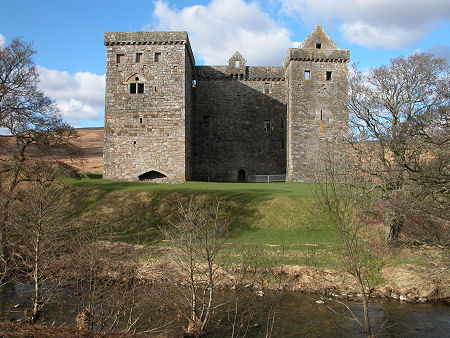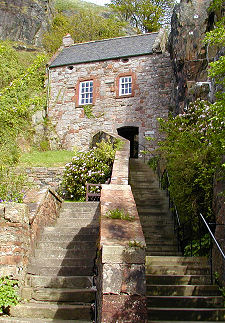| This Week’s Topic… | |||

Best viewed in
|
“Soulis! Soulis! Go boil him in brew!” William de Soulis lived from about 1280 to about 1320. From 1318 to 1320 he was Lord of Hermitage and he was a man so deeply unpopular that there are two quite separate tales told of his demise. Whichever way you look at it, William de Soulis seems to have been an unpleasant man, even by the standards of his many unpleasant contemporaries. You can take your pick between the stories of how he met his end. One is rather ordinary and, probably, historically accurate. The other combines deeply evil deeds, supernatural horror, and an especially gruesome but fitting end for the villain. The second version is based largely on a ballad popular in the Borders in the 1700s, which may have been based on earlier folk stories. As background, the de Soulis family had been connected with forbidding Hermitage Castle in Liddesdale, close to the English border, since 1249, when Nicholas de Soulis built a wooden castle here. In 1318, his descendant, William de Soulis, became Lord of Hermitage. It is unlikely that the original wooden castle had yet been replaced in stone, but today's Hermitage Castle is an oppressive and chilling place that gives credence to even the most fanciful of the stories concerning William de Soulis.
But first, the boring, historical bit. Border lords at the time were always having to look closely at whether their interests were best served by siding with the English or the Scots, and it seems that in 1320 William de Soulis took part in an English-inspired plot to kill the Scottish king, Robert the Bruce. It failed, and the participants were rounded up, with de Soulis being imprisoned in Dumbarton Castle, where he subsequently died.
Complaints about de Soulis's activities were frequently reaching the ears of King Robert the Bruce himself, and when he was told of this latest outrage, Bruce, in exasperation, cried "Soulis! Soulis! Go boil him in brew!" Needing no further invitation, the locals overpowered de Soulis, using a specially forged chain to bind him, as ordinary ropes could not contain his supernatural powers, and took him to the summit of Nine Stane Rig. It was believed that de Soulis could not be killed by ordinary means, so instead he was boiled in molten lead in a cauldron suspended above a large fire. When news reached the king that his words were being taken literally, he sent soldiers to Hermitage: but it was too late, and they were only able to report back what had happened. Take your pick which story you prefer, but both end in de Soulis's death; both end with the confiscation by the Crown of Hermitage Castle; and both end without evoking much sympathy for William de Soulis! |
||

